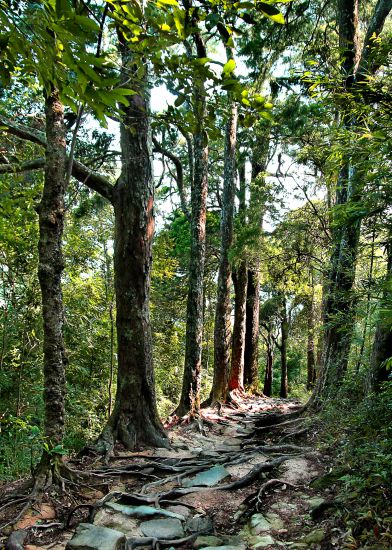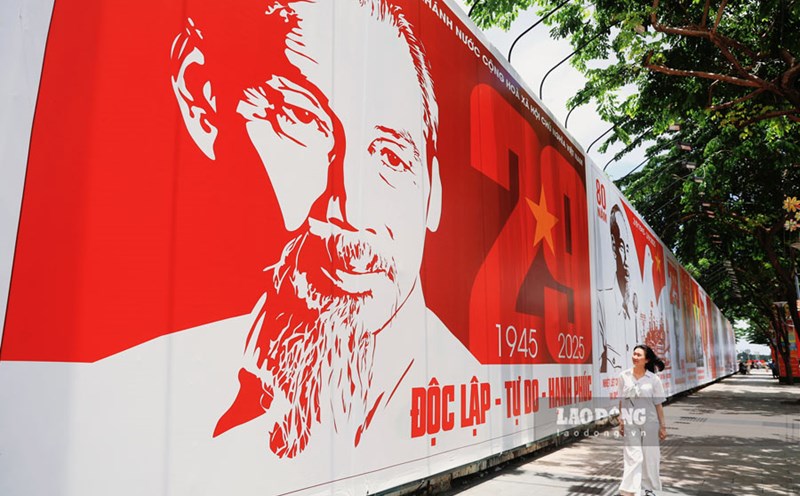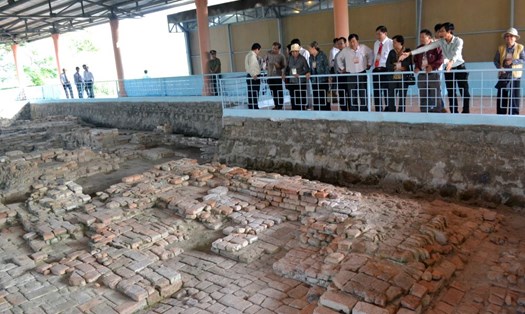The journey to prepare documents is difficult
Since 2013, Quang Ninh province has initiated a program to build a dossier to submit to UNESCO to recognize Yen Tu as a World Cultural Heritage. After receiving opinions from experts, ministries, branches and the Government, more provinces of Bac Giang and Hai Duong also participated.
By 2019, international experts assessed that the dossier only had potential and was not eligible for implementation. In 2020, when the program was restarted, the COVID-19 epidemic broke out, causing progress to continue to stagnate.
Mr. Nguyen Viet Dung - Director of the Department of Culture, Sports and Tourism of Quang Ninh - said: "After the COVID-19 pandemic, by 2023 - 2024, the work of establishing and protecting new records was really restarted drastically. UNESCO and ICOMOS have submitted documents that do not clarify the outstanding global value, authenticity and continuity of heritage clusters. In April 2025, I and the inter-provincial working group protected the dossier at UNESCO, at that time the dossier was at risk of being returned, and had to wait a year or even 5 years to submit it back. This is an extremely big challenge, because we have been pursuing it for 13 years, making the filers very concerned.
"The two file protections in June and July 2025 are a turning point. We have clearly demonstrated the "Tam Hoa" ideology of Truc Lam Buddhism, as well as the authenticity, continuity and outstanding global value of the heritage cluster. As a result, 20/21 member countries of the World Heritage Committee have supported and approved it" - Mr. Dung said.

Global value from the "harmony" ideology and heritage cluster
Venerable Thich Thanh Quyet - Vice Chairman of the Board of Directors of the Vietnam Buddhist Sangha, Head of the Board of Directors of the Vietnam Buddhist Sangha in Quang Ninh province - emphasized: "In the history of the world, there are few kings like Tran Nhan Tong, when at the peak of their glory, leaving the throne to return to Yen Tu for monasticism. He founded the Truc Lam Buddhist Sangha for the people, for the country, for humanity and peace. The Tam Tamma principle of Truc Lam Buddhism has global value.
That is reconciliation, harmony, peace. Conciliation was to resolve all conflicts in the Tran Dynasty's clan, from the family to the court. The harmony is to unify all systems of ideology, beliefs and religions of the time, ethnic groups and regions of the country at that time, to create a united, united country, three great sabotages against the Nguyen - Mong army, creating the Eastern A festival under the Tran Dynasty. Peace is after the great devastation of the Nguyen - Mongolian army, the country enters a period of stagnation; not only that, this victory also prevents war in neighboring countries, creating a relationship between Dai Viet and neighboring countries".
The Three Gorgeses ideology not only has historical significance, but has been continuous for more than 700 years, contributing to building sustainable peace. When protecting the dossier before the Council of Monuments and Sites (ICOMOS), international ambassadors all supported 100%, many ambassadors also expressed their hope that the Tam Hoa ideology would spread widely to build a peaceful world" - the Venerable said.
Results from perseverance
On July 12, 2025, at the 47th session of the World Heritage Committee, the Yen Tu - Vinh Nghiem - Con Son Relic and Scenic Landscape Complex, Kiep Bac was officially recognized as a World Cultural Heritage under Decision No. 47 COM 8B.22. This is the first chain-shaped World Cultural Heritage of Vietnam, and the second inter-provincial Heritage among the total 9 World Heritage Sites of Vietnam recognized by UNESCO.
The process of building the dossier is a testament to the steadfastness and close coordination between ministries, branches, localities, the Vietnam Buddhist Sangha, domestic and international scientists. Since 2020, when the Prime Minister directed the addition of Hai Duong province to the dossier, three localities (Quang Ninh, Bac Giang, Hai Duong - now Quang Ninh, Bac Ninh and Hai Phong) have overcome difficulties in epidemics, large terrain, organized hundreds of meetings, seminars, and dialogues at home and abroad.
The People's Committee of Quang Ninh province alone has sent explanation reports and supplemented information to UNESCO and ICOMOS 4 times (November 2024, February 2025, April 2025, June 2025). That perseverance and openness contributed significantly to the dossier's recognition.
The heritage recognized by UNESCO according to the criteria (iii), a special testament to the unique combination between the state, religion and people in forming Vietnamese cultural identity, creating national unity, maintaining regional peace; Criteria (vi), reflecting the global value of Truc Lam Buddhism - a religion originating from Yen Tu, with enduring influence, continuing to maintain rituals, pilgrimages, and budget both domestically and internationally.
The event of UNESCO recognizing the Yen Tu - Vinh Nghiem - Con Son and Kiep Bac Monuments and Scenes Complex as a World Cultural Heritage is a worthy recognition of the journey of more than a decade of perseverance, while affirming Vietnam's position on the world heritage map, contributing to spreading the unique cultural and spiritual values of Truc Lam Buddhism to friends around the world.











